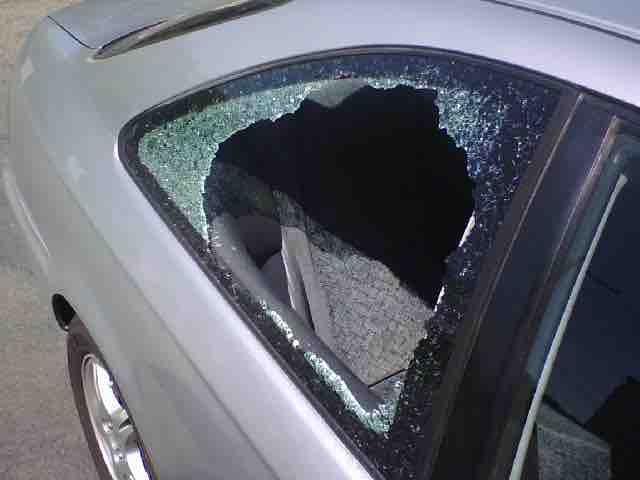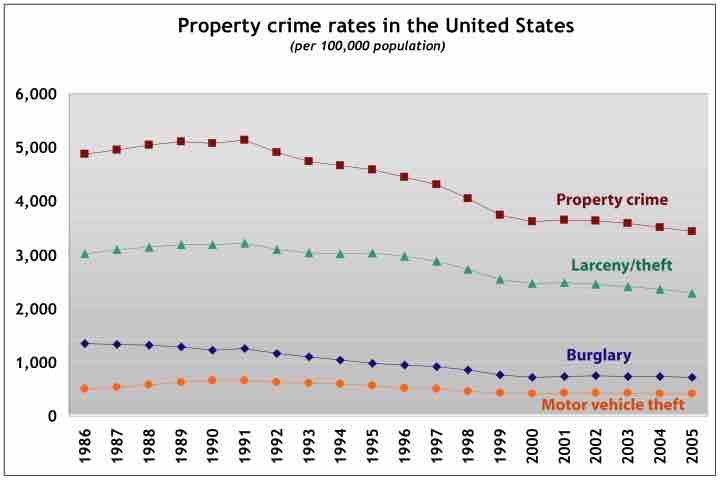Property crime is a category of crime that includes larceny, theft, motor vehicle theft, arson, shoplifting, vandalism, and burglary . Property crime only involves the taking of money or property, and does not involve force or threat of force against a victim. Property crimes are high-volume crimes, with cash, electronics, power tools, cameras, and jewelry often targeted.

Car Window Burglary
This is a photographic example of a car that has been burglarized.
Burglary of residences, retail establishments, and other commercial facilities involves breaking and entering, and then stealing property. Attempted forcible entry into a property is also classified as burglary in the FBI's Uniform Crime Reports (UCR) definition. In the United States, burglary rates are highest in August and lowest in February, with weather, length-of-day, and other factors having an effect on rates . Fall and winter are peak seasons for burglary in Denmark. Most residential burglaries occur on weekdays, between 10 to 11 a.m. and 1 to 3 p.m., when homes are the least likely to be occupied. Some crime prevention programs, such as Neighborhood Watch, have shown little effectiveness in reducing burglary and other crime.

Property Crimes in the United States
Property crime rates in the United States, 1986-2005
Theft of cash is most common, followed by vehicle parts, clothing, and tools. In 2005, only 18% of reported cases of larceny and theft were cleared in the United States . Shoplifting is a specific type of theft, in which products are taken from retail shops without paying. Items popular with shoplifters include cigarettes, alcoholic beverages, and fashionable clothing. Motor vehicle theft is a common form of property crime, often perpetrated by youths for joyriding. The FBI includes attempted motor vehicle thefts in its Uniform Crime Report (UCR) definition. Crime prevention and target-hardening measures, such as car alarms and ignition locks, have been effective deterrents against motor vehicle theft, as have been practices such as etching VINs on car parts. Only 13% of reported motor vehicle theft cases were cleared in the United States in 2005.

Theft
An example of theft: someone took everything except for the front wheel.
Statistics for violent crimes are accessible and available to the public. In 2004, 12% of households in the United States experienced some type of property crime, with theft being the most common. The percentage of U.S. households that experienced property crime dropped from 21% in 1994 to 12% in 2004. Moreover, from 1996 to 2005, the number of arrests in the United States for property crime has declined by 22.1%. The decline is far larger for offenders under age 18, with a decrease of 43.8% in property crime arrests, compared to a 9.5% decrease for those 18 and over. The peak age for property crime arrests in the United States is 16, compared to 18 for violent crime arrests.